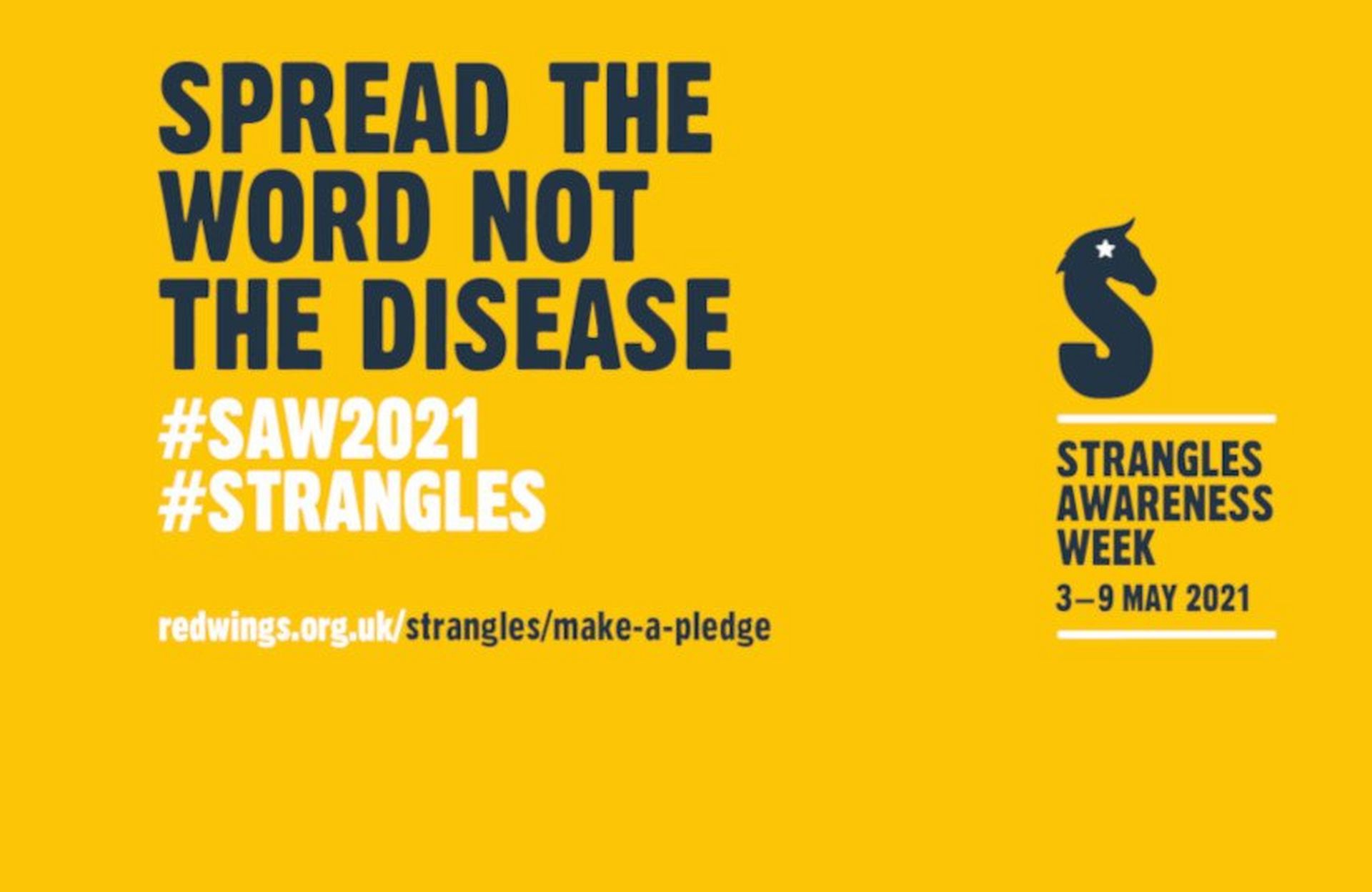
When it comes to equine illnesses, there’s one with the power to scare us like nothing else can… Strangles! Truly terrifying, it’s every owners worst nightmare.

Are you strangles aware?
If you’ve never experienced or witnessed it, you’re very lucky! However, you may also feel you don’t know as much about it as you could. So, we’re going to be taking a look at the facts and the fiction, so you possess the information that every equestrian should know about this dreadful disease. Keep reading to find out:
- What is strangles?
- What are the symptoms?
- How is strangles diagnosed?
- Can there be complications?
- How is strangles spread?
- How do you care for a horse with strangles?
- Can my horse be immunised?
- How can strangles be prevented?
- Should we talk about strangles?
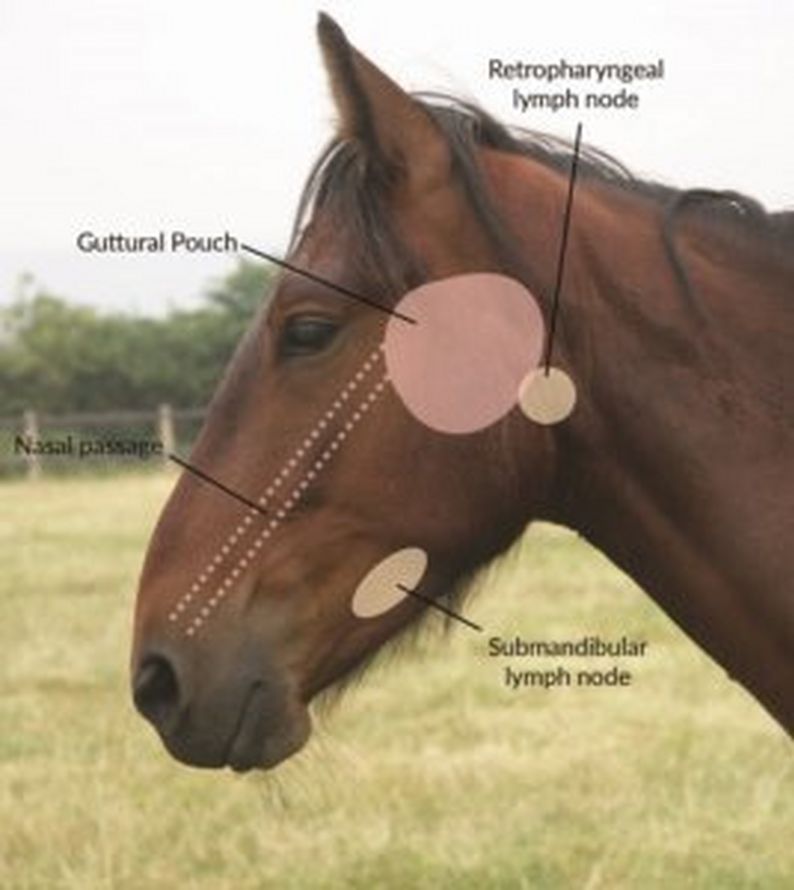
Redwings Horse Sanctuary - Strangles
What is strangles?
What is strangles? The cause is a bacterial infection in the upper respiratory tract. It can only contracted by horses, ponies, donkeys and mules.
Firstly, the bacteria Streptococcus Equi enters the body through the throat. It proceeds to attach to the (lingual and palatine) tonsils and then the adjacent lymph nodes (submandibular and retropharyngeal). From here, it spreads to the lymph glands of the head and neck causing swelling and abscesses.
With its symptoms being recorded as early as the twelfth century, strangles is not a new thing. So, why does it matter? Affecting five-star event yards, local riding schools and private yards alike, strangles does not discriminate. With up to 100% infection rate, it can spread through equine populations like a wildfire. With the Animal Health Trust identifying that there are approximately 600 outbreaks of strangles in the UK each year, it’s time we all played our part in fighting the disease.
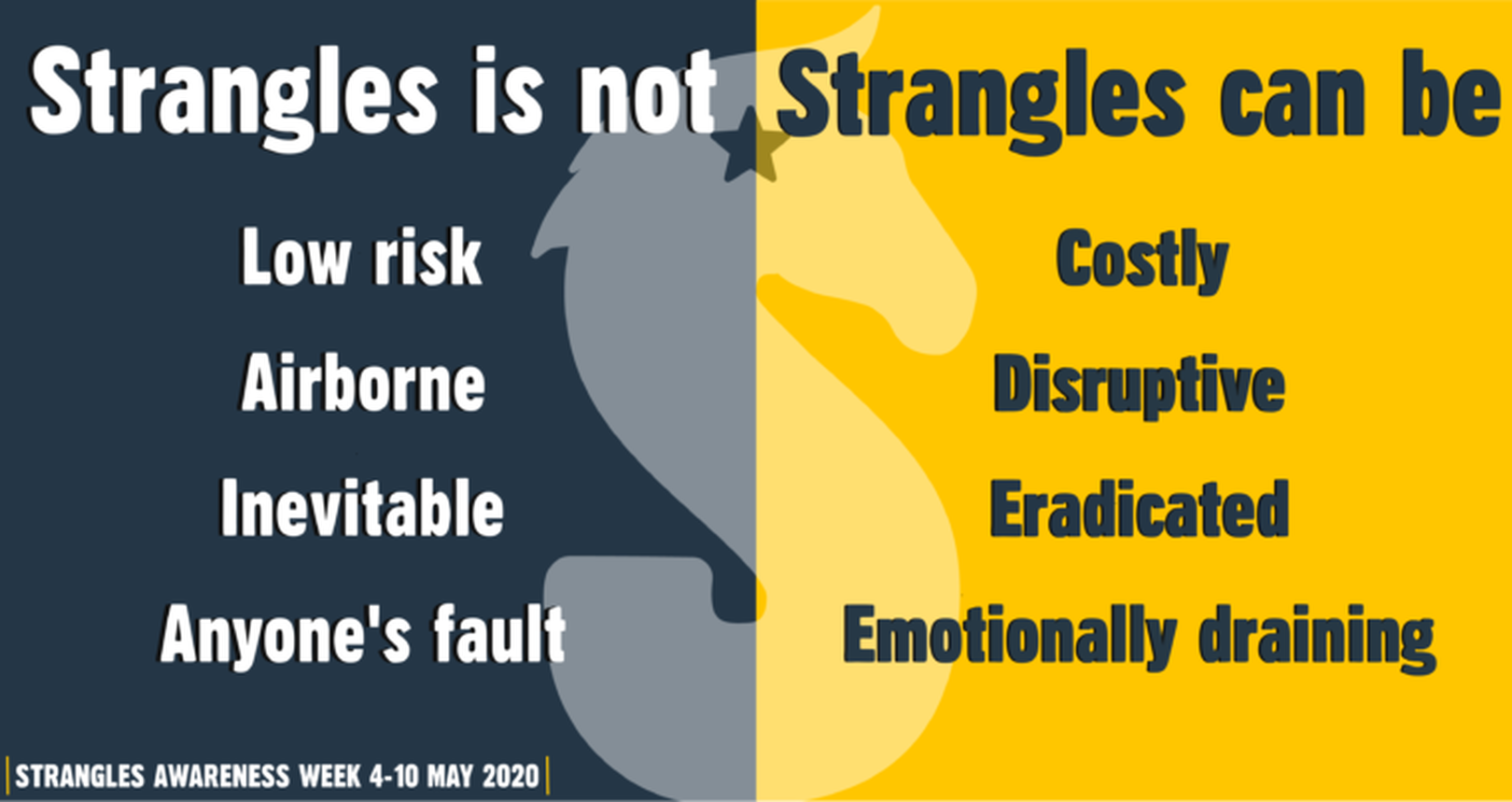
What are the symptoms?
Like most forms of disease, the signs aren’t visible immediately. Strangles bacteria begins to incubate from the day contact is made. This means that is can take anywhere between 3 and 21 days for the infected horse to become visibly unwell, displaying signs such as:
- Sudden fever (above 38.5 degrees Celsius).
- Depression.
- Nasal discharge (thick, yellow and foul smelling).
- Coughing.
- Swollen, tender glands.
- Loss of appetite (Anorexia).
- Inability to swallow (Dysphagia).
- Standing with the head outstretched.
- Laboured breathing (Dyspnoea).
- Suffocation (Asphyxia).
Strangles Diagnosis
It’s nothing to be ashamed of! If your horse is showing symptoms of strangles, don’t panic but do take action. Start by calling a vet immediately. Next, notify all other owners. This will trigger extra precautions and quarantine of the facility to stop movement on and off the yard.
A vet will test for strangles by taking samples to send off for laboratory testing. There are three types of test that vets may do...
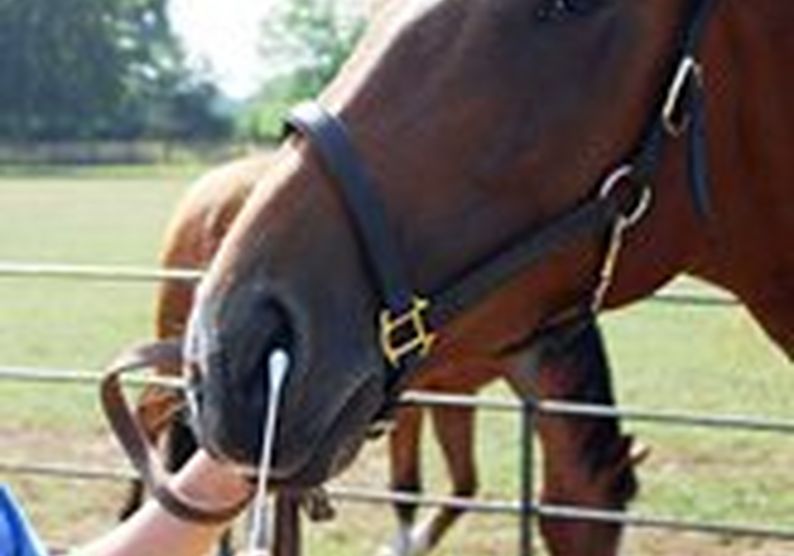
Redwings Horse Sanctuary - Swab
Swab - If the horse has nasal discharge or a ruptured abscess the excretions can be tested via a swab. For horses without discharge the swab is placed further into the nasal cavity, taken from closer to the guttural pouch. To be considered free from infection three negative consecutive test results (at weekly intervals) are needed. This isn’t effective for identifying a carrier.
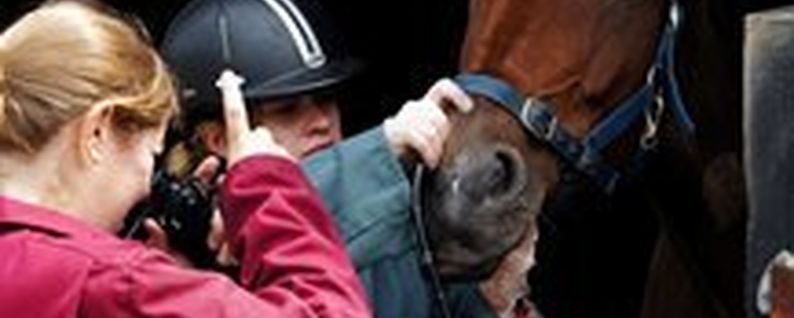
Redwings Horse Sanctuary - Guttural Pouch Endoscopy
Guttural Pouch Endoscopy - Taking samples from the guttural pouch. This is the most reliable way of testing when a strangles patient is no longer infectious. It’s also used to check if a horse is a strangles carrier.
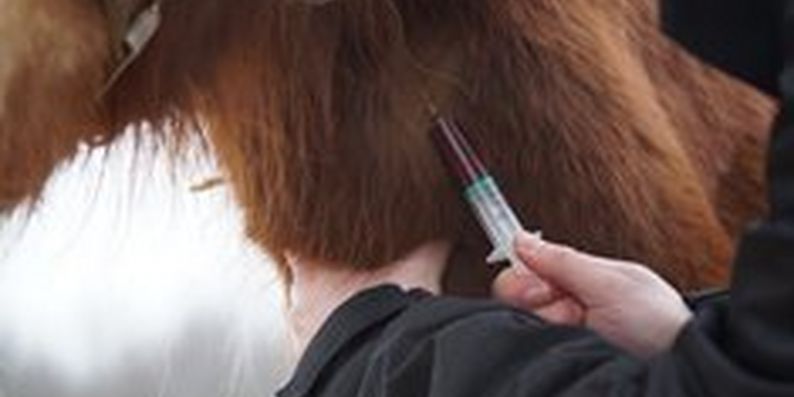
Blood Tests - Strangles antibodies can be present in a horse’s blood from around two weeks after exposure and remain detectable for up to eight months. Blood tests play an important role in finding carriers and are sometimes required when moving your horse to a new livery yard.
Can there be complications?
While the process can be long, the vast majority of horses do recover from strangles. However, approximately 20% develop a life-threatening complication. This is generally more likely in the young, old or those with a compromised immune system.
Bastard Strangles: In rare cases the infection can spread from the upper respiratory tract causing abscess formation in other parts of the body such as the lungs, brain and abdomen.
Purpura Haemorrhagica: This is a rare complication. It’s associated with the immune system as the horses’ body fights the strangles bacteria.
How is strangles spread?
Contracted when the equine inhales or ingest the bacteria Streptococcus equi, strangles is extremely contagious, . This can be as a result of direct contact with pus or nasal discharge but also through contaminated tack, hands, boots, clothing, feeding utensils, water troughs, stables, fencing or bedding… Essentially any contaminated individual or surface.
Fiction: Strangles is NOT air born. So, following the correct biosecurity procedures is vital to preventing the spread of the disease!
Strangles Carriers
Without proper treatment, horses that have been infected can become strangles “carriers”. Carriers can remain infected for months or even years.
Horses have two guttural pouches, one either side of their throat. These are adjacent to the lymph nodes, separated by a thin membrane. During a strangles infection abscesses form and then burst. They can break through the skin but generally the membrane ruptures first, releasing puss into the guttural pouches. When the horse lowers their head, this is naturally drained . This process clears the area from infection. Sometimes, the puss binds and forms chondroids. These are unable to drain through the nose. Stuck in the guttural pouch long after the horse has recovered, the bacteria is able to escape infecting anything the carrier touches. Thankfully, there is a solution. All horses should be tested post infection. This way, remaining chondroids can be detected and removed!
Caring for a Horse with Strangles
A vet must see any horse who has contracted strangles, to advise on care and provide a tailored treatment plan. Vets will generally advice on quarantine procedures, cleaning of abscesses and appropriate feed as well as prescribing pain medication and in rare cases anti-biotics. Complications and deterioration must be picked up quickly. So, the condition of infected horses should be continuously monitored.
Quarantine stables should have:
- Lots of room to move around.
- Good ventilation and lighting.
- Access to fresh water.
- Soaked easy to eat feed.
- A raised food bowl.
- A deep and comfortable bed.
- Enrichment for good stimulation.
Preventing Strangles

Redwings Horse Sanctuary - Foot Bath
Prevention is always better than cure. Whether you’re at home or away at competition, it all starts with good hygiene, knowledge and proper quarantine procedures!
New Arrivals / Quarantine
New, sick or at-risk equines should be isolated. This means:
Keeping them in a well signed quarantined area, away from any other horses. Isolation areas must be surrounded by barriers at least 10 feet away from the animals. All equipment should be regularly disinfected with a suitable product and must not used outside the area. Any muck or rubbish should be collected in bags and stored away from other horses and water sources. Hand washing, cover-all’s, gloves and foot baths should also be used to remove any infection from people heading in and out of the area. Should you be caring for an isolating horse, avoid contact with other equines and visiting facilities where possible to stop the spread of the disease.
At Competition
- Double check you’ve not forgotten anything – Ensure you use only your own equipment.
- Avoid direct contact between your horse and others.
- Only handle your own horse where possible.
- Wash your hands after touching any other horses and ask others to do the same.
- Take your own forage and water.
- Avoid using communal grazing areas and troughs.
- Carry disinfectant wipes, sprays and stable cleaner in your travel kit.
- If you spot any changes in your horse’s health or hear news of a suspected case at the event, take precautions and contact your yard manager and vet.
Day To Day
Day-to-day action may seem a little drastic but following good hygiene practices can keep your horse protected from a whole host of invisible nasties. Good preventative measures include:
- Avoid sharing grooming kits, rugs and feed buckets.
- Don’t allow your horse to come into contact with others while hacking or in group lessons.
- Regularly monitor your horse’s temperature and general wellbeing – This will help to spot signs of illness.
- Keep a yard diary of movements on and off site.
- Communicate openly with all other owners.
Immunity
Like humans, horses can develop immunity to diseased post infection. Unfortunately, there are many different types of Streptococcus equi bacteria that can cause a strangles infection. This means that no horse is ever risk free. It should never be relied upon, however horses that have been infected before may have some level of immunity.
It is possible to vaccinate against strangles. However, it’s not considered to be as highly effective as other inoculations. For example, equine flu. If you believe your horse to be at a higher risk or susceptible to complications you can discuss it further with your vet.
The best way to protect your horse is to follow good hygiene practices and correct isolation procedures.
Should we be talking about strangles?

It’s time we stamped out the stigma. Perhaps the most important thing we can do to protect our horses from strangles is talking about it!

Many of us would be scared to face the ‘blame game’ that can come with any infectious disease. The truth is though, strangles can affect any horse at any time. In other words, there’s no need to feel ashamed. As a community, we need to stand together a support each other. Open and honest communication is key. It means that the problem can be spotted quickly and dealt with effectively.
Take action, don’t forget to make your free pledge to:
- Champion yard agreements and good hygiene.
- Communicate openly and respectfully about strangles.
- Clear your horse of becoming a strangles carrier after infection.
Real People. Real Stories.
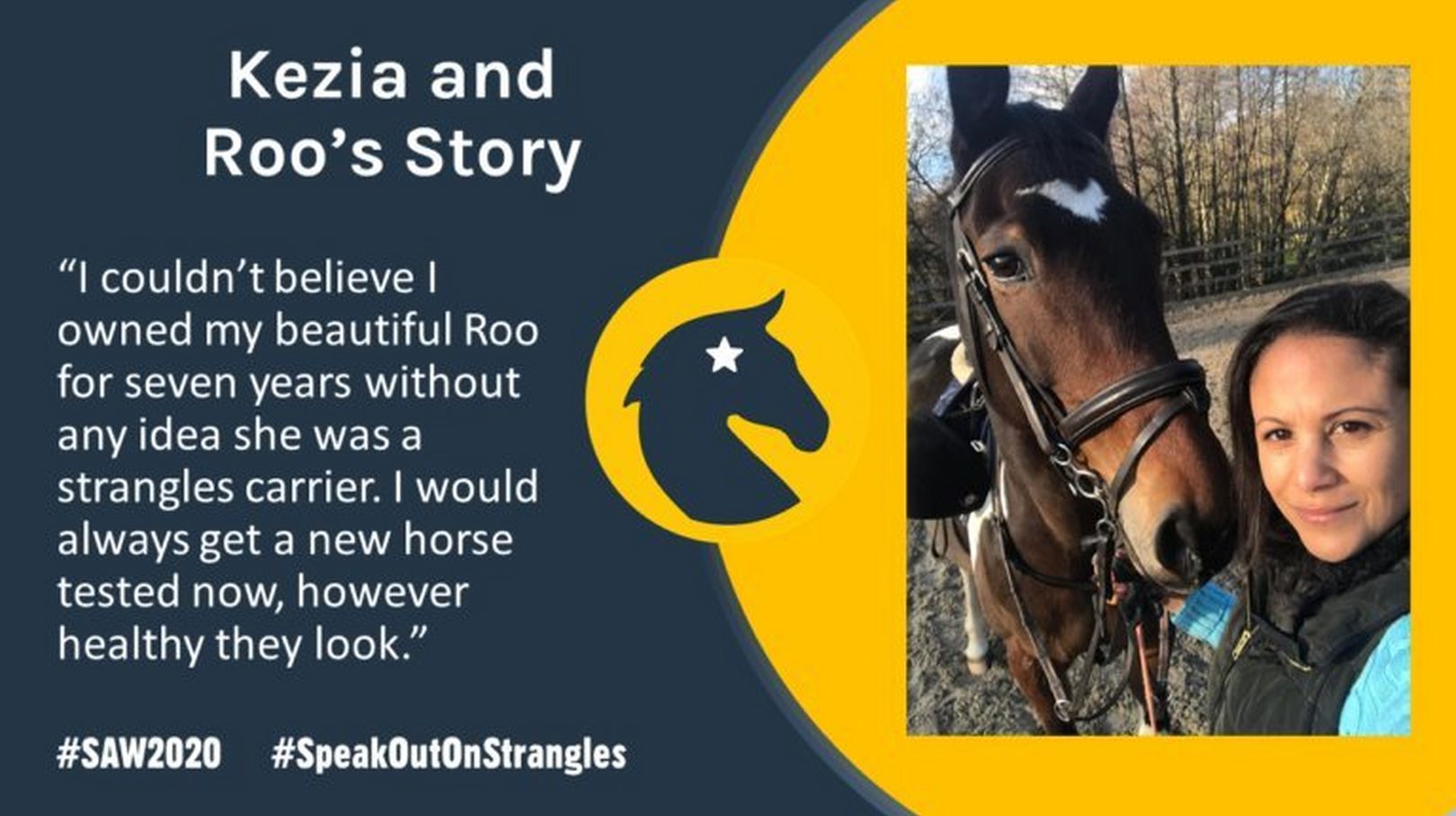
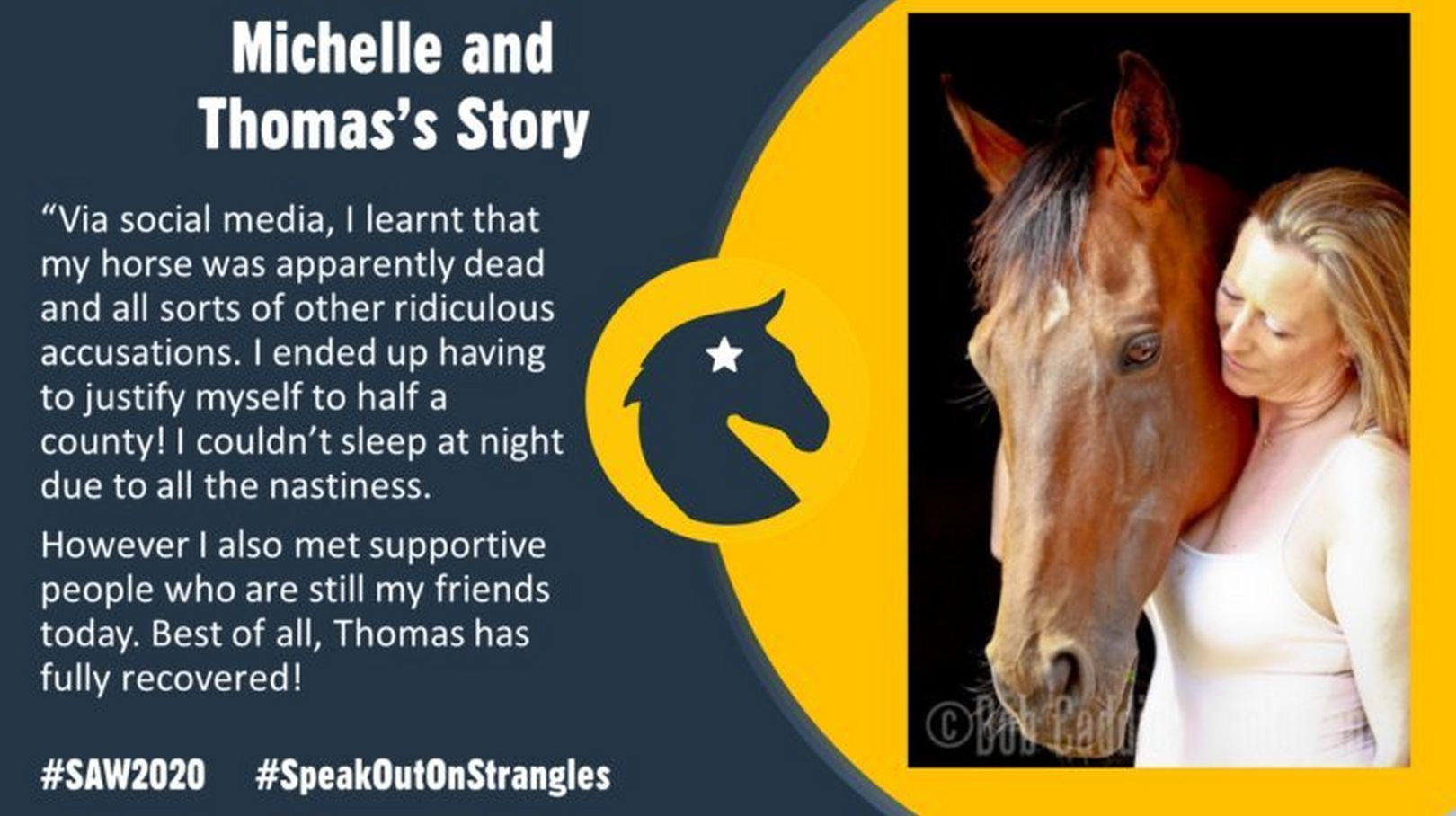
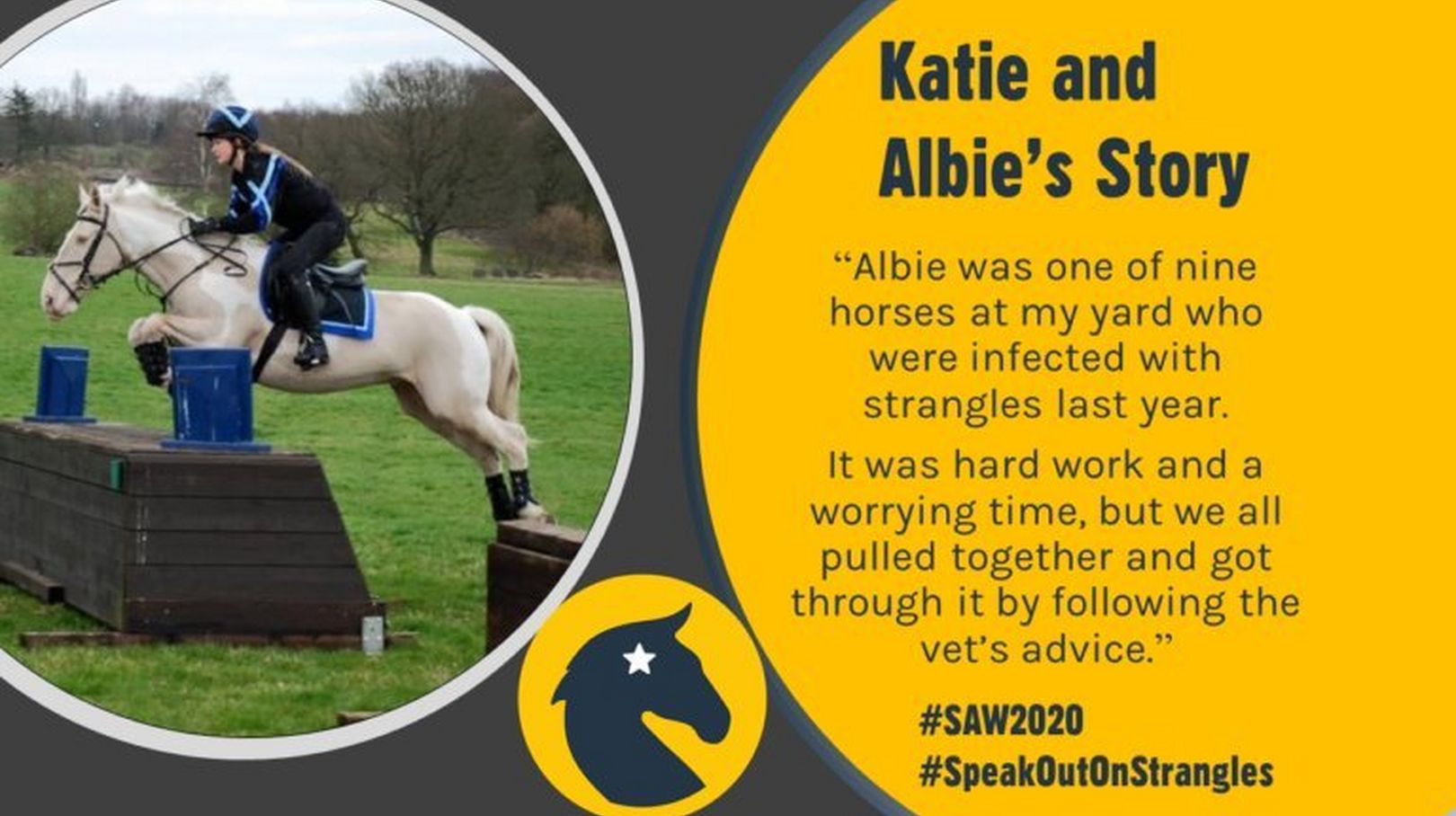
We hope strangles is something you and your horse never have to deal with. But it's better to have the knowledge and not need it, than to need it and not have it! For more information download the free Redwings Horse Sanctuary Horse Owners Packs. Don't be afraid to speak up! You can share your strangles stories on social media using #SAW2021 and #SpeakOutOnStrangles.




